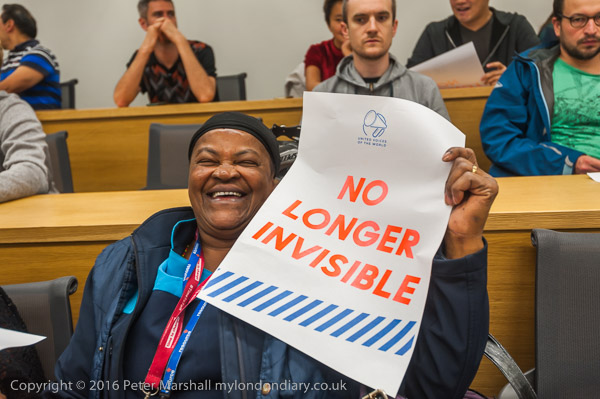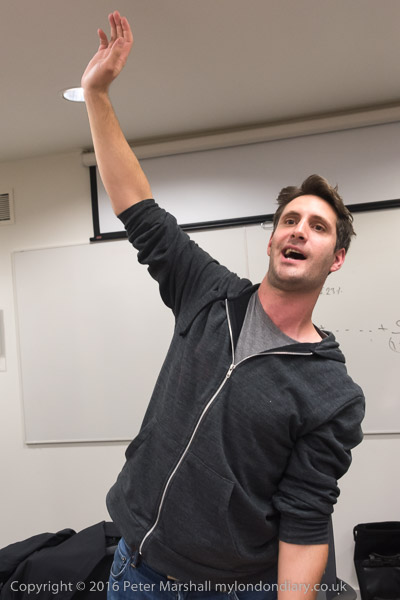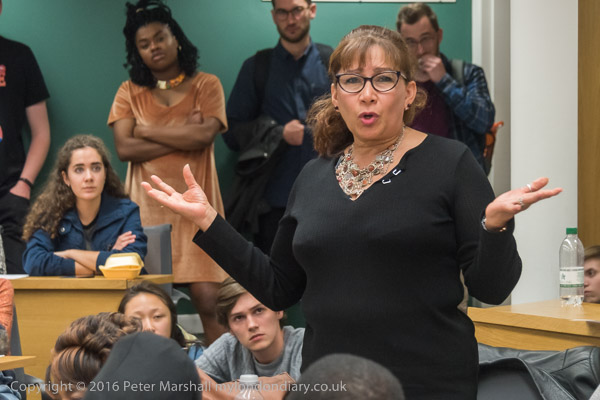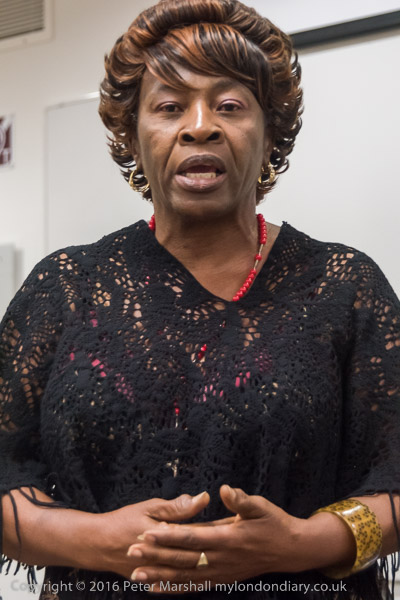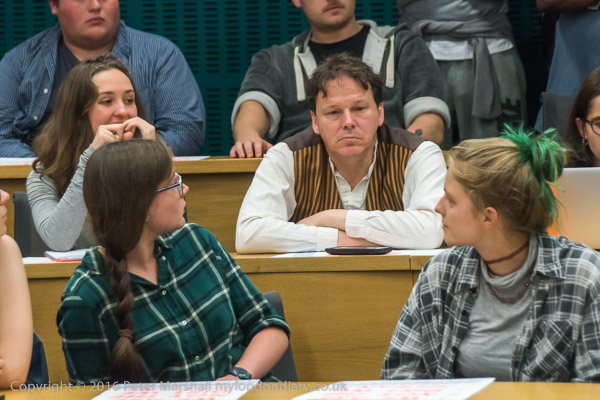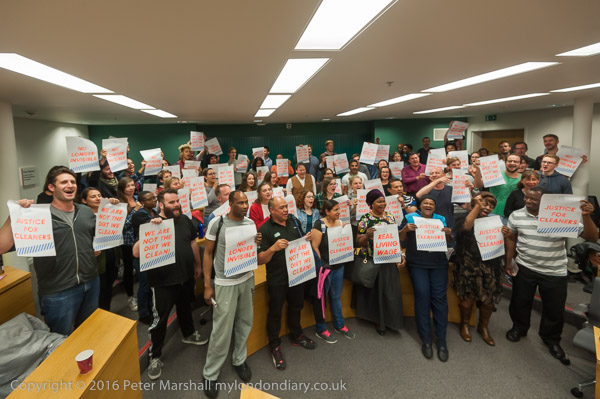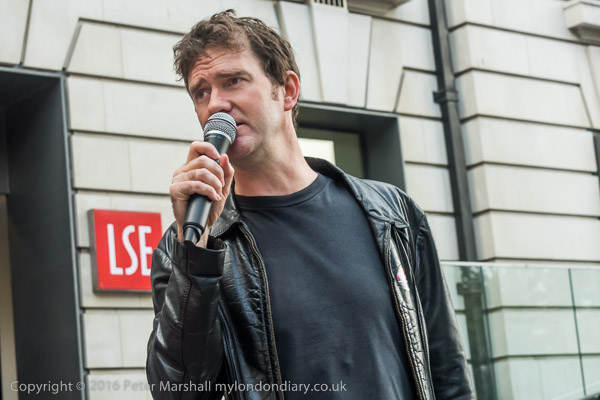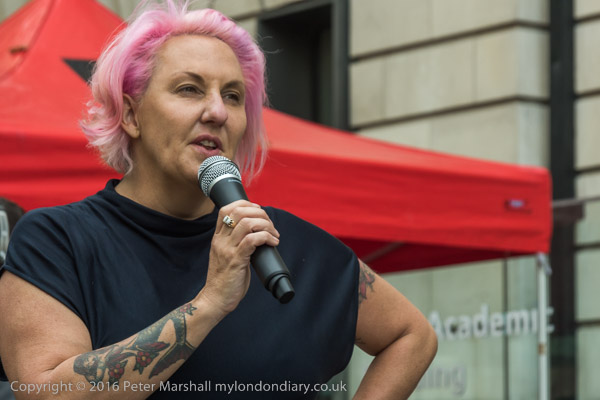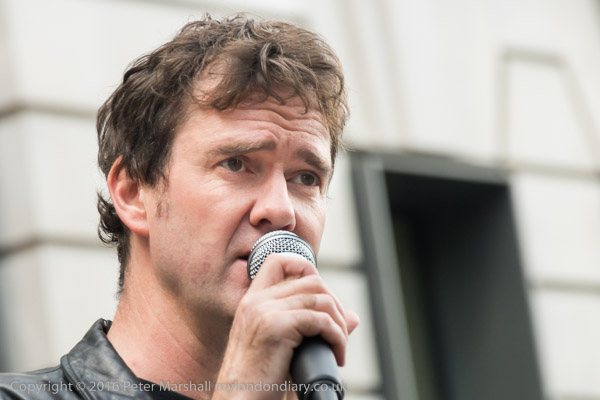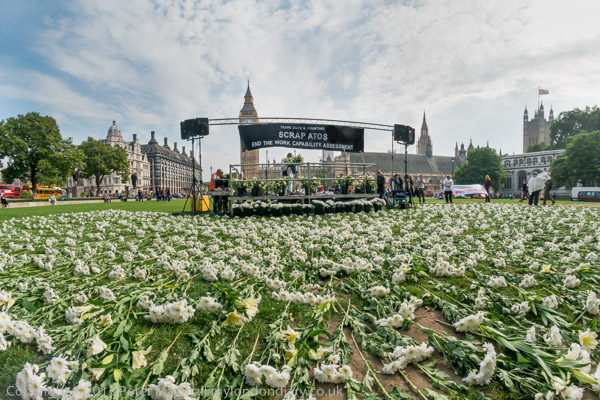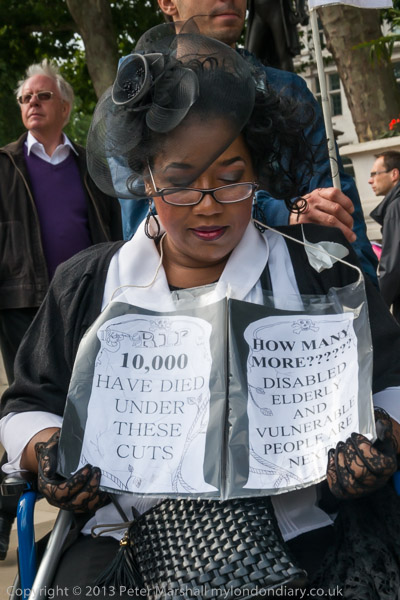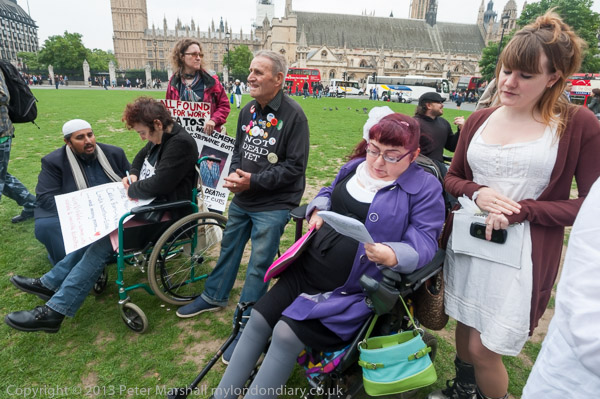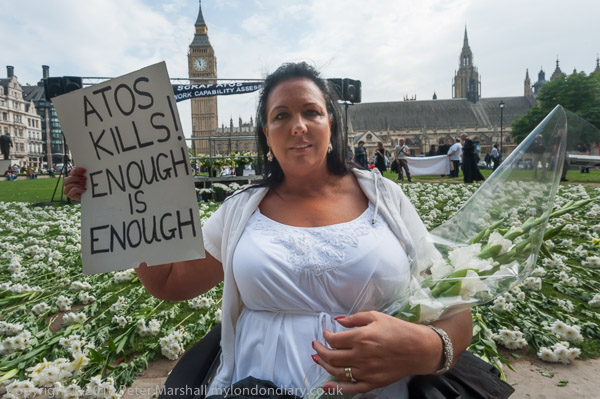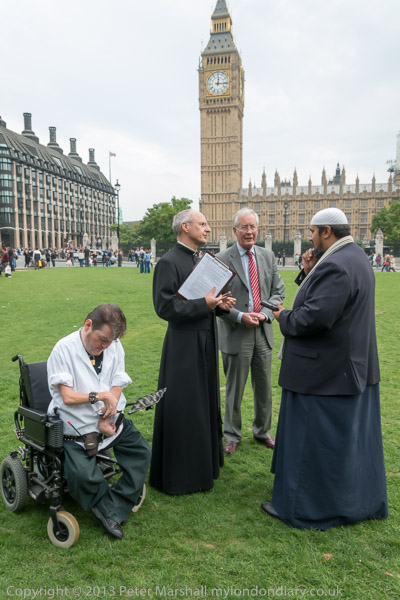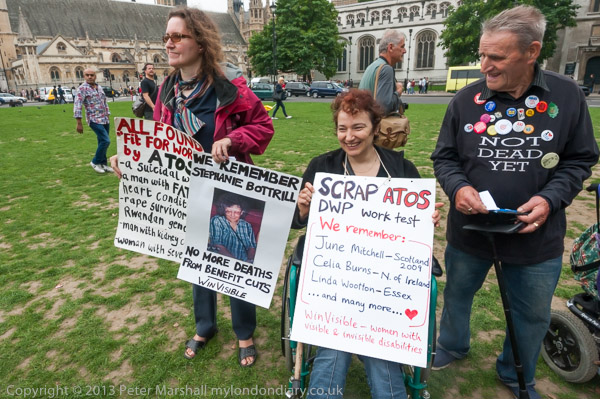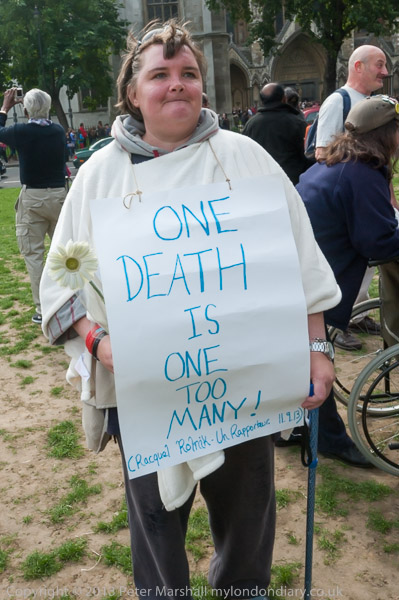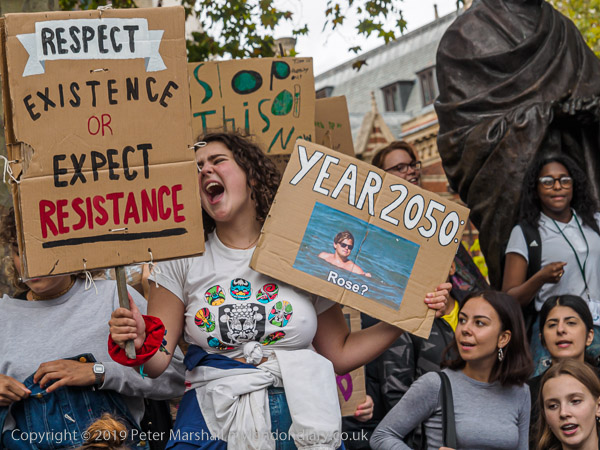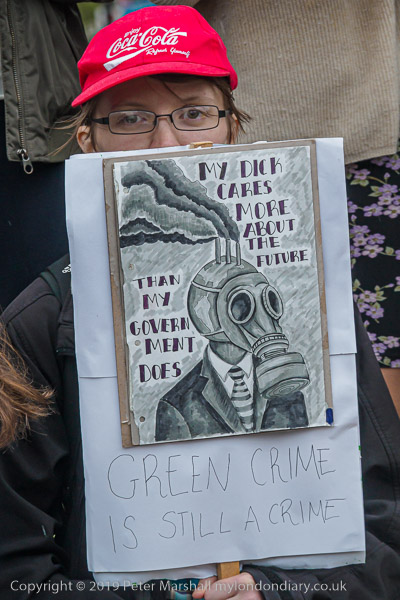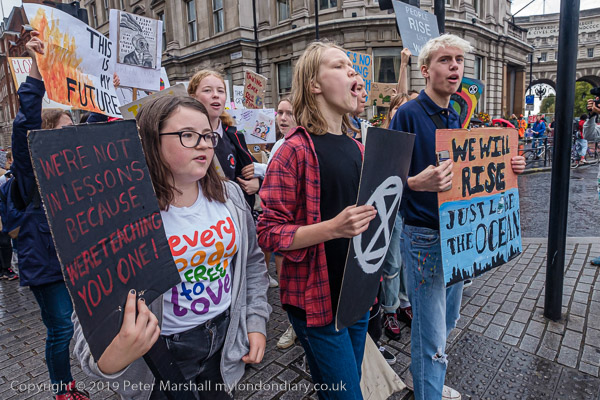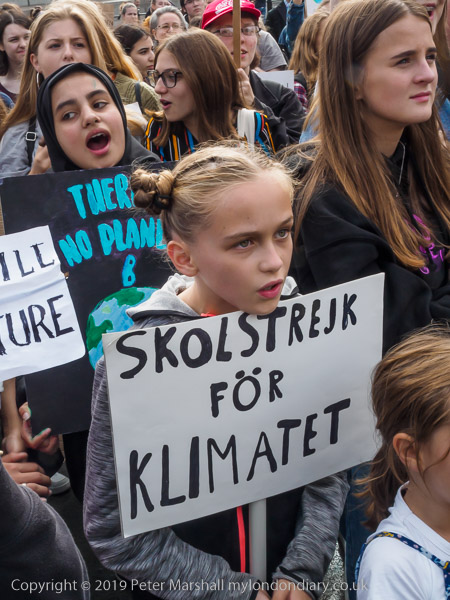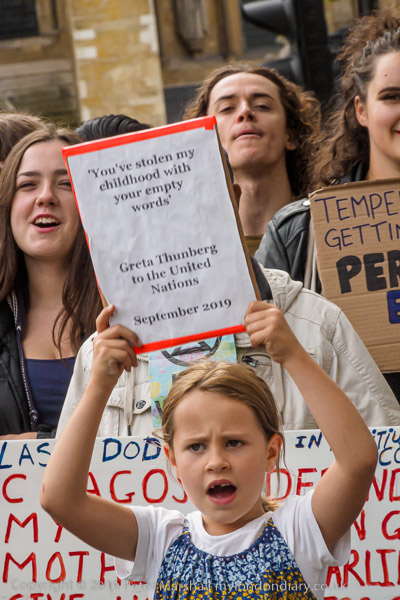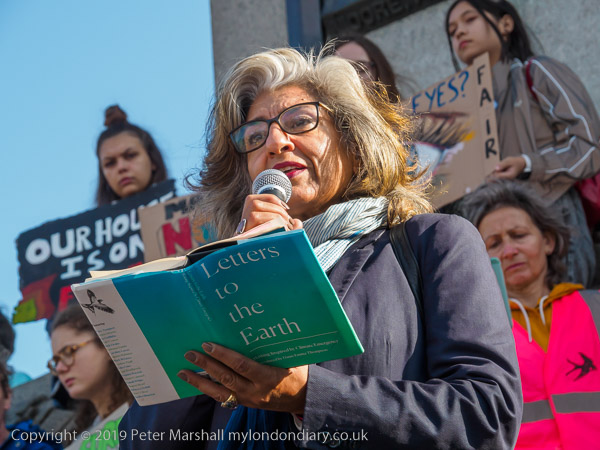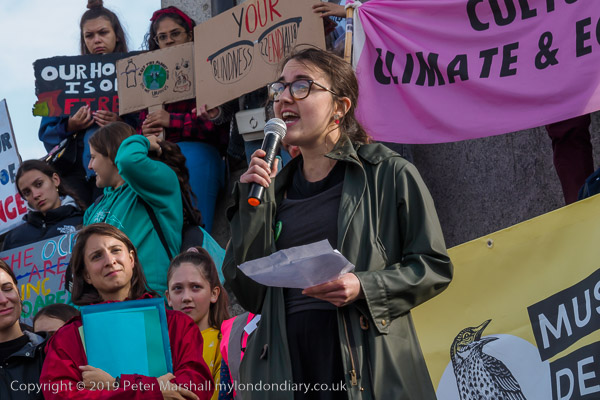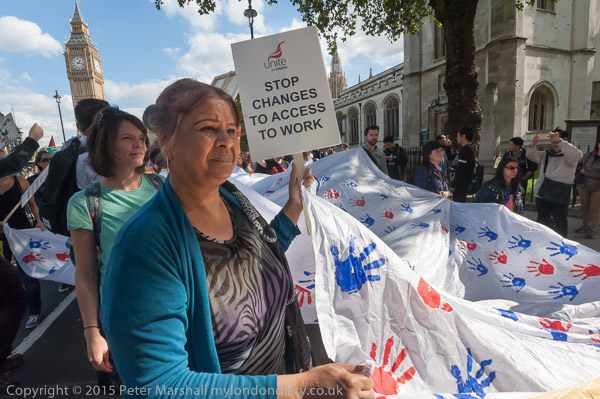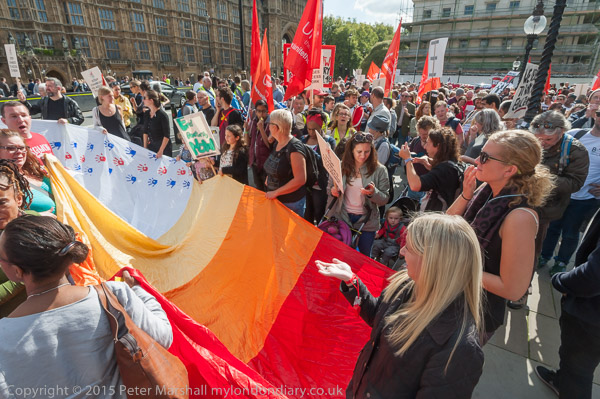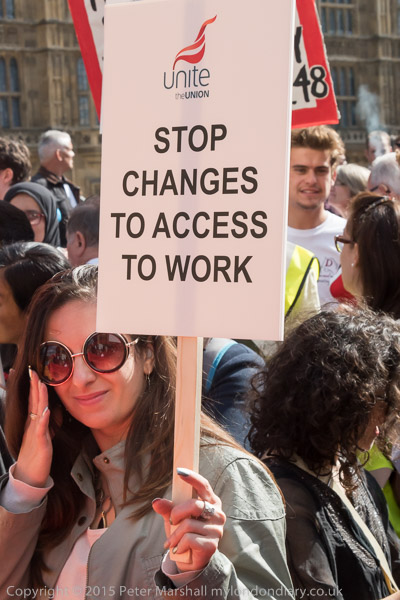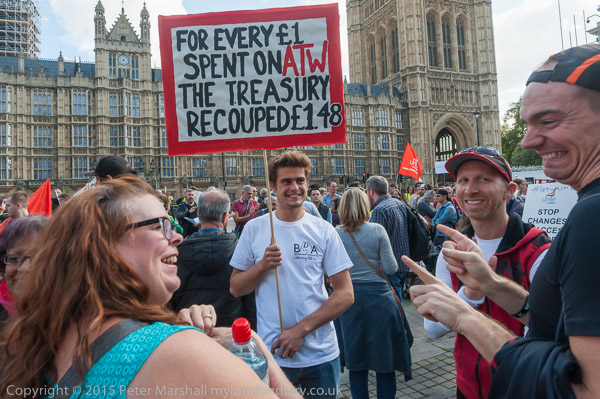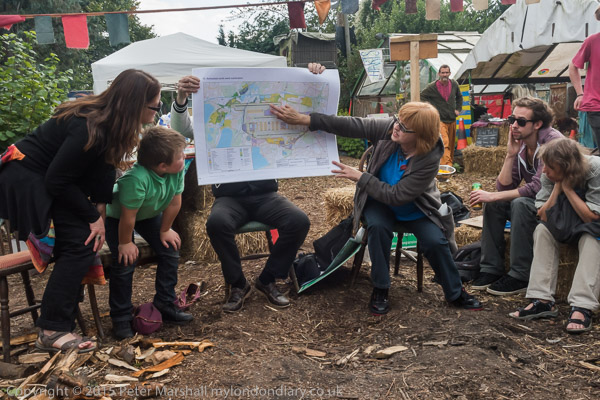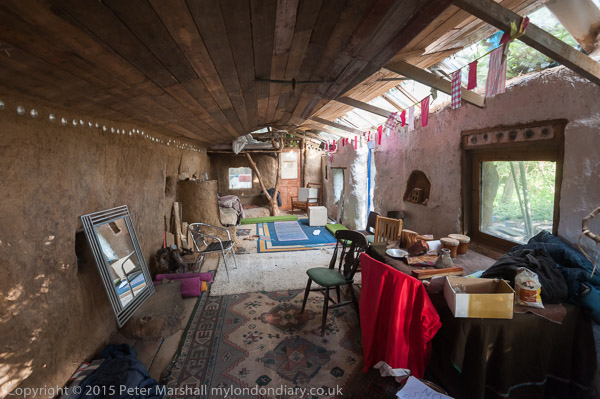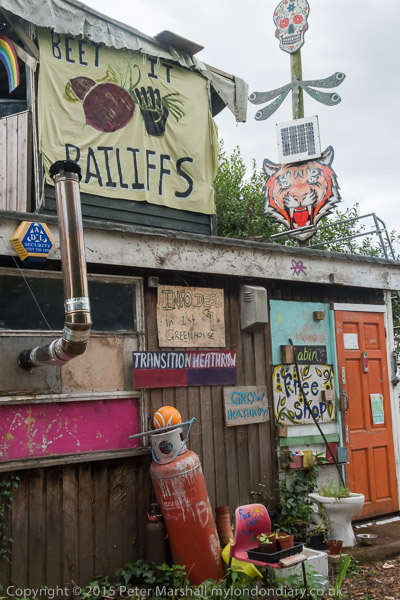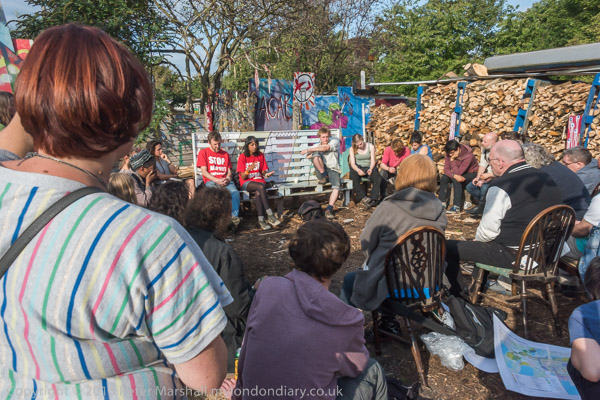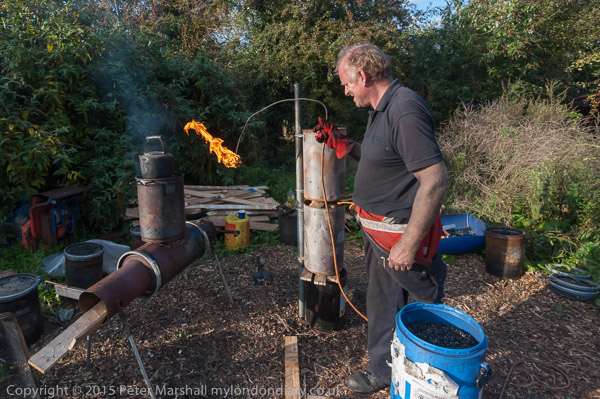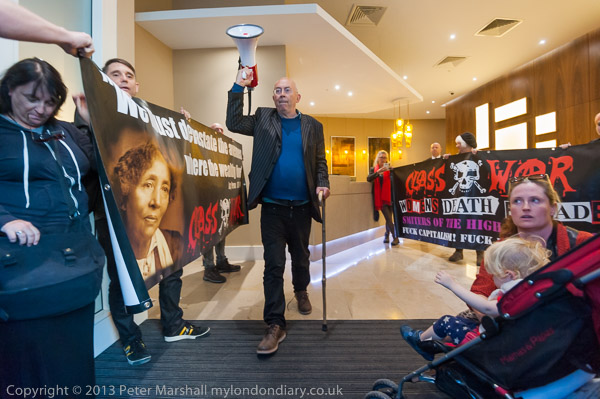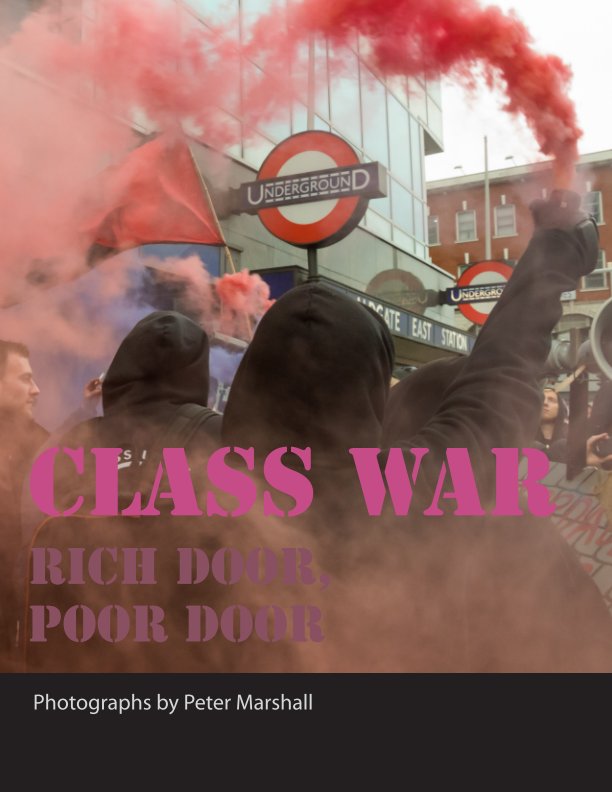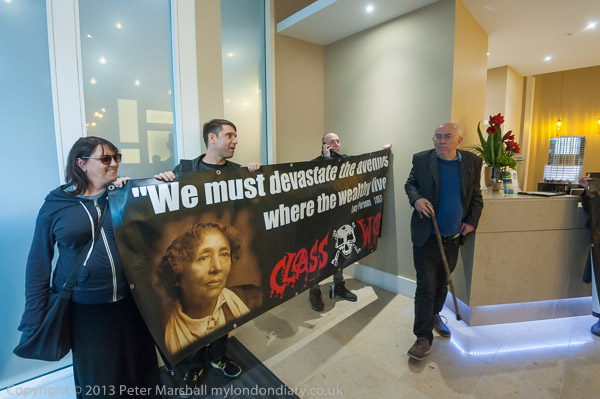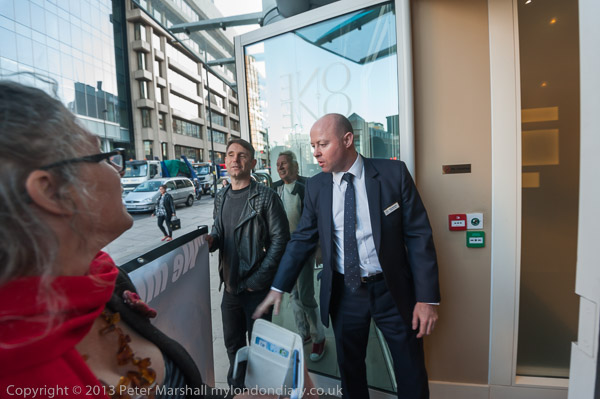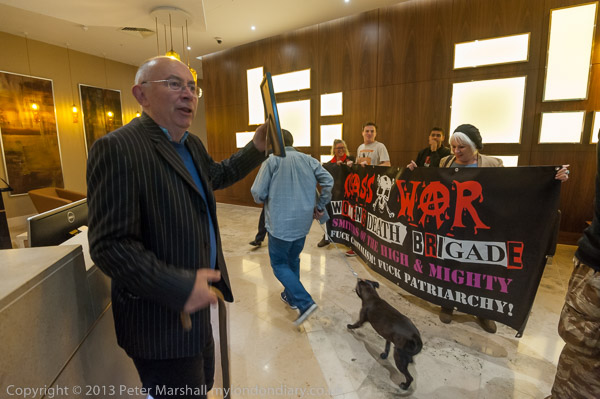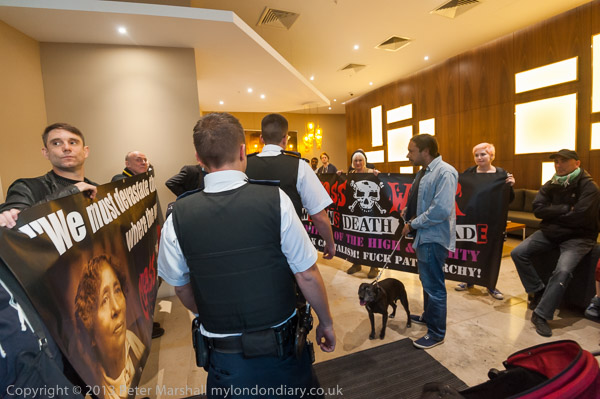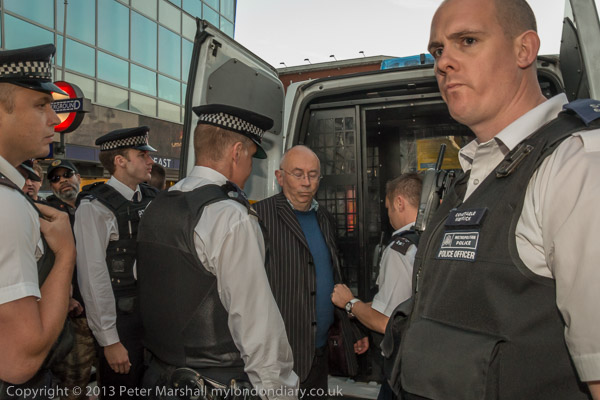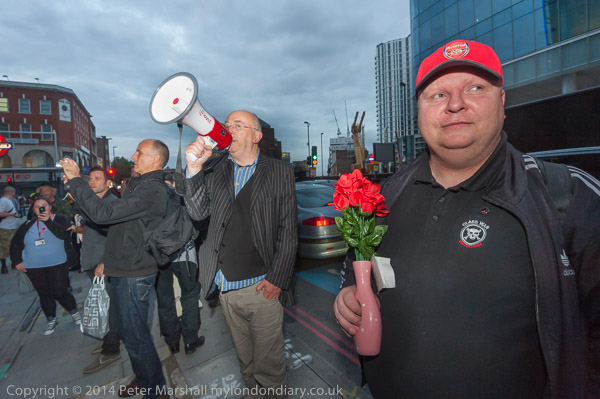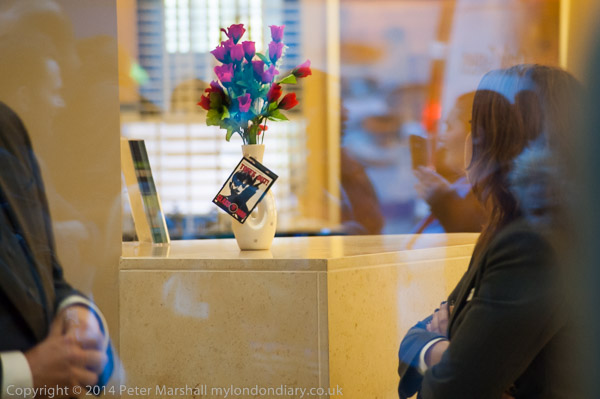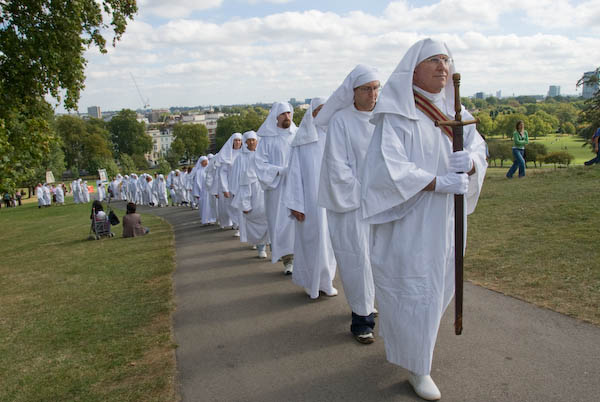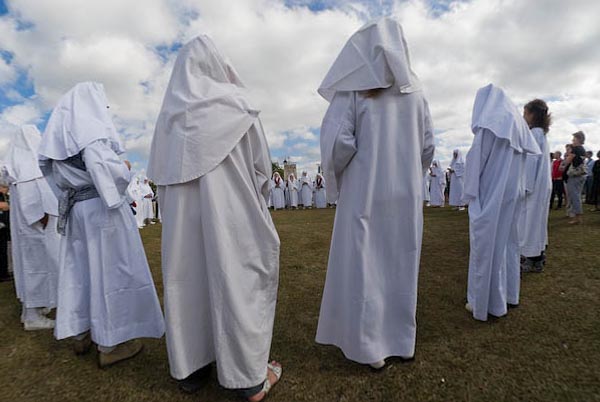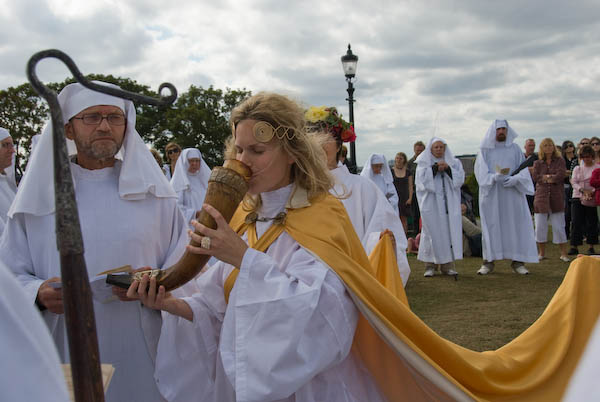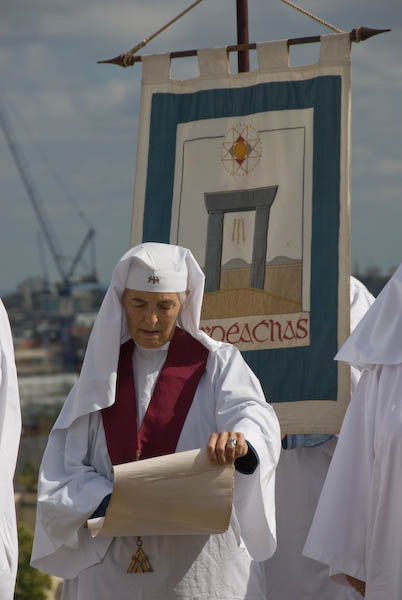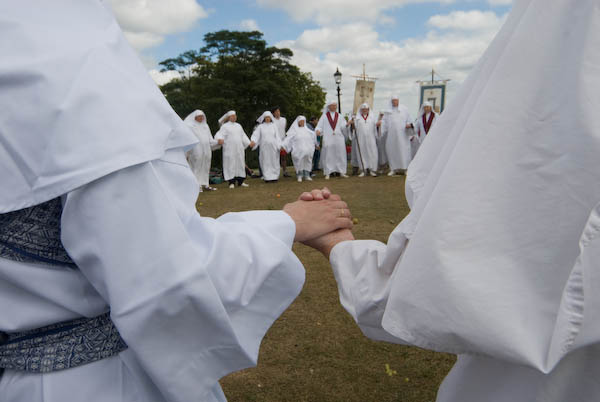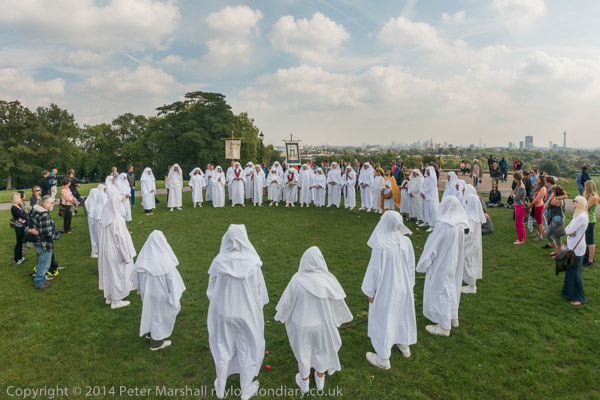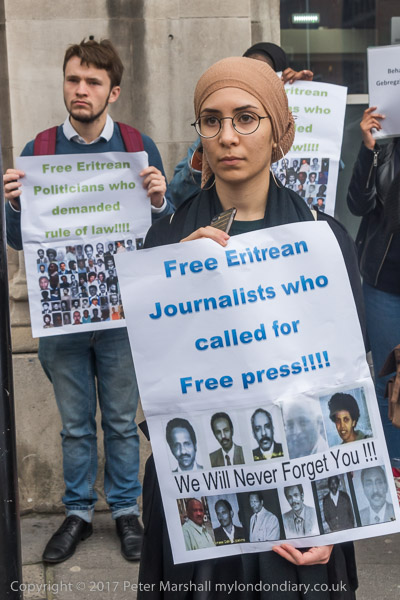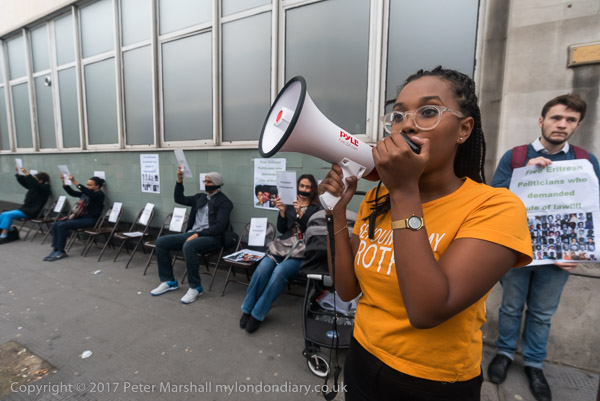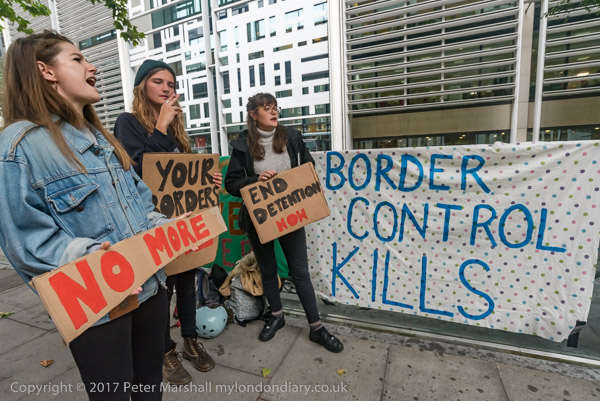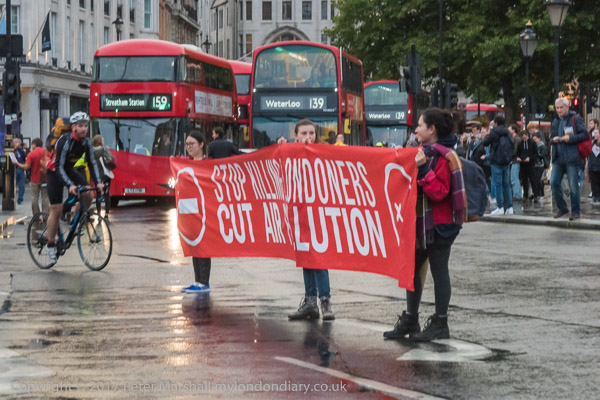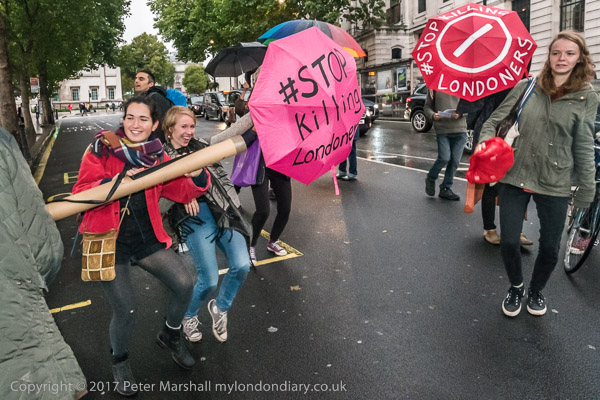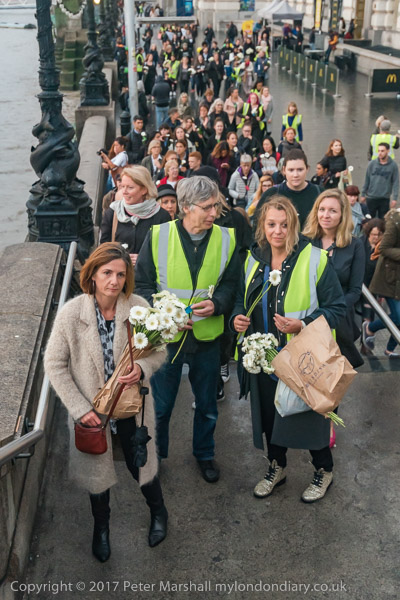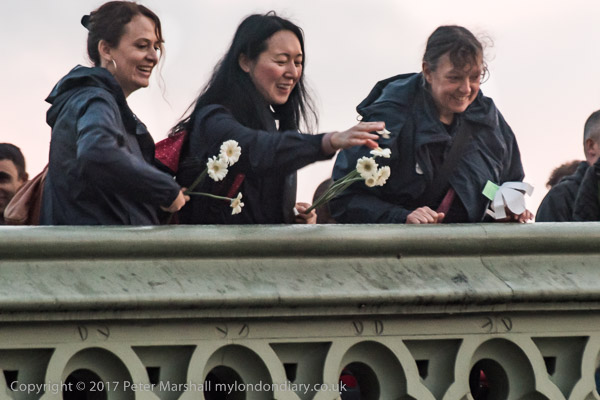Martydom of Ali
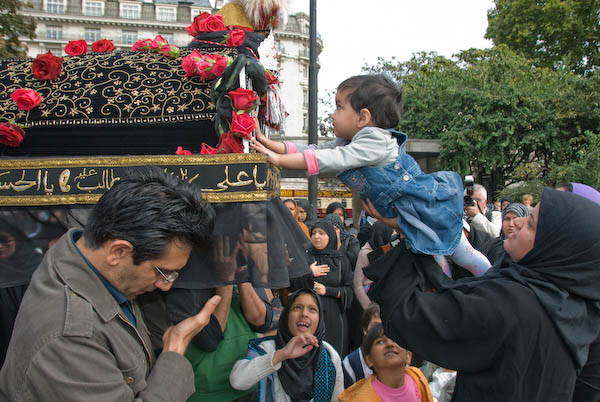
On Sunday 30th September 2007 I photographed two events in London connected with religion, the first Muslim and the second organised by Christian Aid.
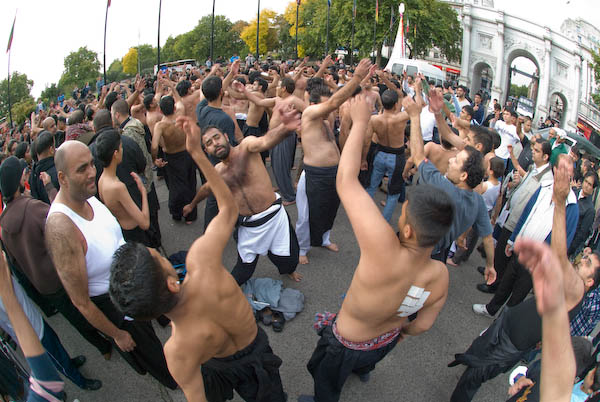
Shia Muslims hold a large parade every year mourn the martydom of Ali, a cousin who grew up the the house of the prophet Muhammad and was one of the first to profess his belief when the prophet disclosed his divine revelation when Ali was around ten years old. Later he married Muhammad’s daughter Fatimah and was a great warrior and leader and one of the foremost Islamic scholars.
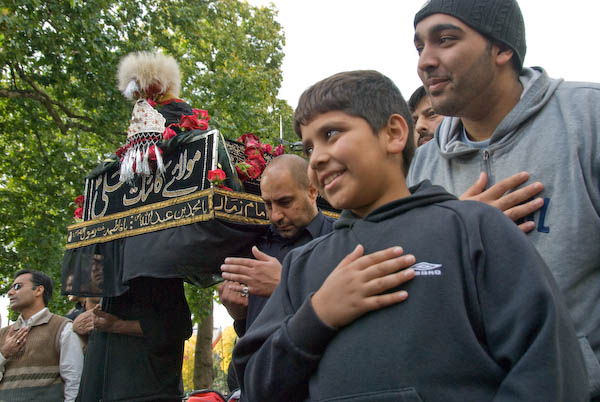
Ali was elected as the fourth Caliph at a time when civil wars were taking place between Muslims following the death of his predecessor, and he fought in a number of battles, eventually being assassinated in 661 CE by a member of a group who regarded him as a heretic while praying in the mosque at Kufa, now in Iraq. Many of the details of events around this time are disputed.
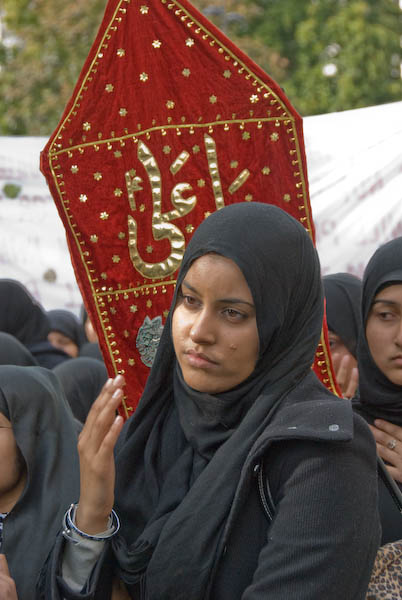
Ali is one of the central figures of Shia Islam and they regard him as having been the rightful successor to Muhammad while Sunni Muslims supported the father-in-law of Muhammad, Abu Bakr who became the first Caliph. The split led to various battles but only became a schism almost 20 years after Ali’s death, when Ali’s son Husayn and family were killed at the Battle of Karbala in 680 CE.
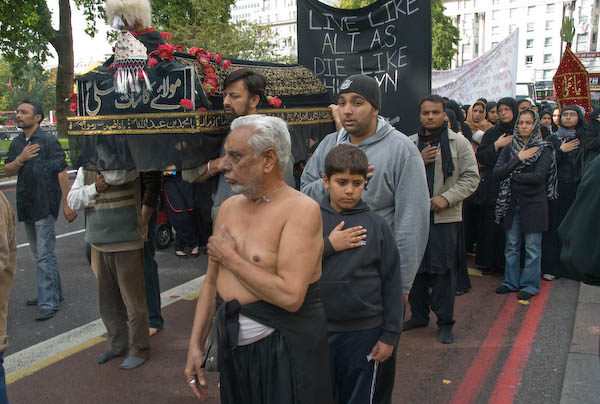
The ceremonies which involve a procession with an elaborate flower-decorated coffin, and tall banners about Ali, began at Marble Arch with a long period of mourning. There was much beating of breasts and then a procession moving very slowly down Park Lane with much continued mourning and beating of breasts. The men march in one group and then the women behind them, the two groups separated by the bier. Many of the men are stripped to the waist and their bodies become reddened by their powerful beating.
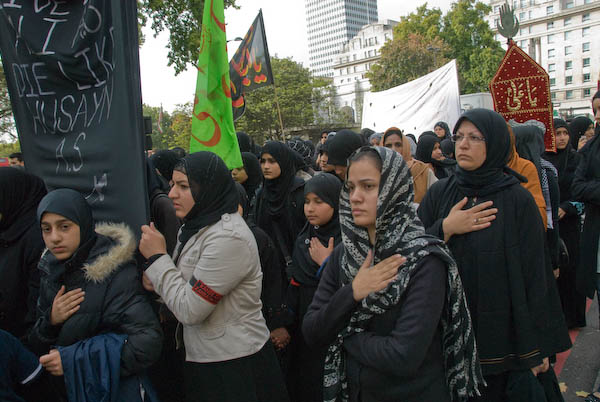
It’s an impressive event which I photographed on several occasions. The stewards at the event have sometimes told me “We do not photograph the ladies” but I’ve also had emails from some of the women thanking me for recording their participation in the ceremony.
Cut the Carbon
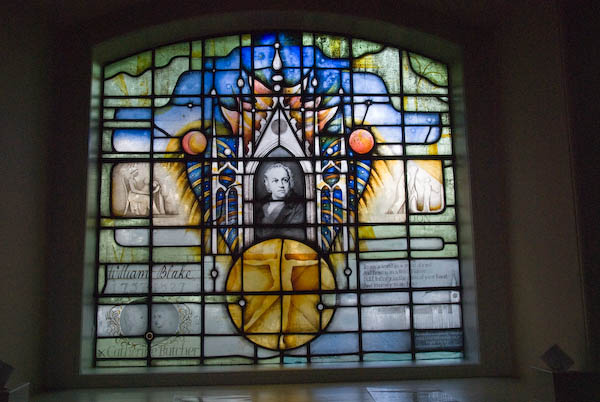
An event of a very different nature was taking place at St Mary’s Battersea, a church with fine views across the River Thames that Turner sat at window above the entrance to record – and a window inside remembers him, with another for William Blake, along with some splendid monuments, one with a relief illustrating Edward Wynter’s feats of crushing a tiger to death and overcoming 60 mounted moors.
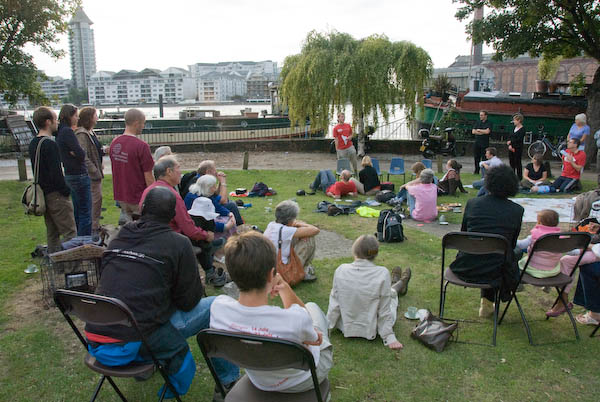
I was there with others to photograph the arrival of Christian Aid’s ‘cut the carbon’ march, arriving in London at the end of a thousand mile journey from Bangor in Northern Ireland via Belfast, Edinburgh, Newcastle On Tyne, Leeds, Birmingham and Cardiff to London – including a detour to meet Prime Minister Gordon Brown at the Labour Party conference in Bournemouth. The following day they were going on to City Hall and then to finish at St Paul’s Cathedral.
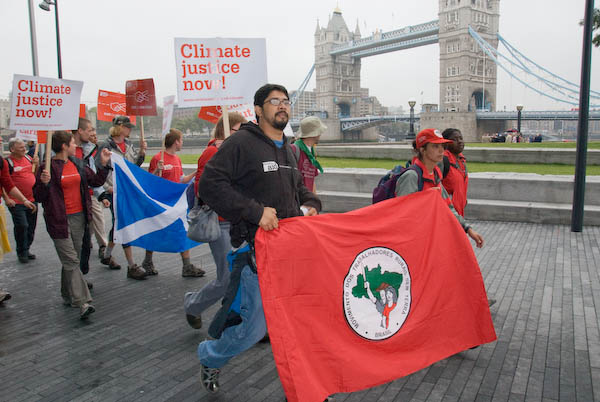
This was a march 14 years ago with an international perspective on climate change, with walkers from Brazil, El Salvador, Kenya, India, Bangladesh, South Africa, Congo and elsewhere. When I photographed it the following day in front of Tower Bridge it was led by marchers from Brazil representing an organisation of landless farm workers – and I was very pleased a few months later to include picture of them in my show on environment protests as a part of Foto Arte 2007 in Brasilia.
More at:
Mourning the Martydom of Ali
Cut the Carbon march
and on October 1st 2007
Christian aid Cut the Carbon march – final mile
All photographs on this and my other sites, unless otherwise stated, are taken by and copyright of Peter Marshall, and are available for reproduction or can be bought as prints.
